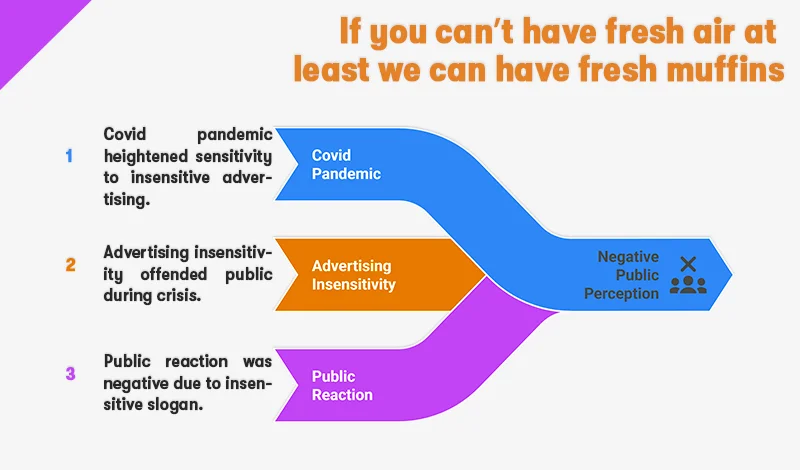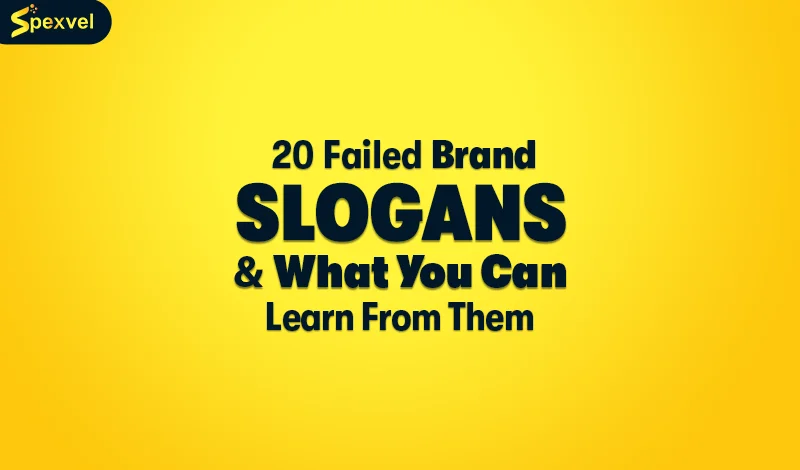In the world of branding, a slogan can make or break a campaign. When done well, it creates a memorable connection with consumers. But if it fails, it can cause confusion, backlash, or go viral for the wrong reasons. Many brands have learned that a catchy phrase must also be clear, sensitive, and aligned with their values.
In this article, we’ll explore twenty real-life examples of failed brand slogans and the key lessons marketers, business owners, and creative teams can learn to avoid similar mistakes.
-
You Can Never Be Too Thin

This slogan was used to highlight the biscuits’ thinness and crispy texture as a healthier or lighter snack compared to regular biscuits. People criticized it for showing unhealthy and unrealistic body standards. This shows brands should use kind and careful messages.
-
Food For the Fun of it

This food brand slogans was used to highlight the snack as a fun and enjoyable treat, but it lacked clarity and a unique message. Consumers already know snacks aren’t meant to be healthy foods, so reminding them of that doesn’t add any real value or motivation to buy.
-
Imagine More Snacks Than You Can Imagine

This slogan was meant to highlight the brand’s delightful snacks, but its unclear and repetitive wording made it hard for consumers to connect with the message. The overuse of the word ‘imagine’ made the slogan awkward and forgettable.
-
Be Your Way

This company slogan is used by Burger King to promote individuality and self-expression. The slogan was too unclear and disconnected from the product, making it hard for consumers to relate it to the brand.
-
Drive One

It was a marketing car brand slogan used by Ford Motor Company, and it failed because it was bland, unclear, and lacked emotion; it didn’t tell you why Ford was worth driving.
-
Turn it Loose

This beer brand slogan was used by beer company and intended to appeal to younger drinkers and suggest fun, freedom, and letting go. It failed because in Spanish, the phrase sounded like having diarrhea, leading to jokes and hurting the brand’s image.
-
Dieting Doesn’t work, Weight Watchers Does

This brand motto failed because the slogan didn’t feel genuine and was confusing. People naturally associate Weight Watchers with dieting, so trying to separate the two didn’t work.
-
If you can’t have fresh air at least we can have fresh muffins

This food brand slogan failed because it used a serious situation during the Covid pandemic for advertising which felt insensitive and did not sit well with people.
-
It’s Not For Women
It was used by a soft drink company and failed because it excluded women and promoted outdated gender stereotypes.
-
We are like a cult with better Kool Aid.
It was used by a Mexican Restaurant in Indiana. The company slogan failed because it made an insensitive reference to a tragic mass suicide, which offended many people. Instead of being edgy or fun, it created discomfort and damaged the brand’s image.
-
Coolest Monkey in the Jungle
The clothing brand used it on a hoodie worn by a black child model. The clothing brand slogan received strong criticism because many people felt it compared the child to a monkey, which was seen as racist. As a result, there was public outrage and some celebrities ended their partnerships with the brand.
-
Sitting On Faces Since 2001
A sunglasses brand used this slogan, but its double meaning made it sound vulgar instead of clever. Many people found it offensive and inappropriate, which ended up damaging the brand’s image.
-
Lose Weight Deliciously With the Aid of Ayds
This slogan was used by the appetite-suppressant candy brand, but it became problematic when the AIDS endemic emerged, as a product name soundly exactly like deadly disease. Despite being unrelated, the similarity in names led to negative associations and caused a drop in sales.
-
Finger Lickin’ Good
KFC used this slogan, but it failed as it clashed with public health advice about hygiene and not touching the face. It sparked complaints in the UK for being seen as irresponsible and unclean.
-
More Doctors Smoke Camels than Any Other Cigarette
The slogan was used by a cigarette company and it failed because it falsely used doctors to promote smoking, misleading the public. As health risks became clear, it lost trust and was seen as unethical.
-
White is Purity
It was used by Nivea but failed because it was considered offensive and culturally insensitive. Because of public criticism, the brand had to remove the ad and apologize.
-
Enjoy The Go
This brand motto was used by the toilet paper brand Charmin, but it failed because it sounded awkward and too direct about bathroom habits. Instead of being funny, it made many people feel uncomfortable.
-
Be Stupid
It was used by a fashion brand and failed because it sent the wrong message, making it seem like the brand was promoting ignorance. The wording was confusing and controversial, leading to backlash and even a ban in the UK.
-
Ready For Apocalypse
It was used by Hyundai and failed because it came out during a serious natural disaster. People found it insensitive and felt the timing was wrong.
-
The Future’s Bright. The Future’s Orange.
It was used by the UK telecommunication brand Orange and failed in some areas because the word ‘Orange’ was linked to political and religious conflict in Northern Ireland.
What You Learn From Failed Company Slogans?
Failed brand slogans show that clarity, respect, and cultural awareness are essential. Misleading or insensitive messages can damage a brand’s image and trust. Always make sure your brand motto matches the audience and is tested before use.
Conclusion
Failed brand slogans show how important it is to use clear and respectful words. Effective slogans highlight the brand’s goal and attract the right audience. If not, it can upset people and hurt the brand’s image. That’s why planning and testing a slogan is very important. Learning from past mistakes helps brands create better and safer messages in the future.


